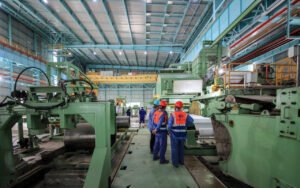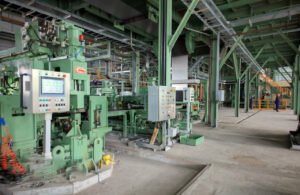MFY’s Stainless Steel Sheet Helps a Southeast Asian Fabricator Slash Scrap by 12%

Are your fabrication profit margins being eaten away by excessive material scrap? It’s a frustrating reality where inconsistent raw materials lead to production halts, wasted resources, and unpredictable outcomes, threatening your competitive edge and bottom line. The solution lies in a strategic shift in material sourcing.
The primary way a high-quality stainless steel sheet reduces scrap is by ensuring material consistency. Uniform mechanical properties and precise thickness tolerances guarantee predictable behavior during stamping, forming, and cutting. This eliminates production variances that cause defects, rework, and ultimately, wasted material for fabricators.
In my role as Global Business Director at MFY, I’ve seen countless manufacturers grapple with this exact issue. It’s a silent killer of efficiency that many accept as a cost of doing business. But it doesn’t have to be. This case study of a valued partner in Southeast Asia demonstrates how moving from a commodity supplier to a strategic material partner can yield transformative results.
This isn't just a story about superior steel; it's about a superior supply chain philosophy. The true cost of your raw material isn't on the invoice—it's revealed on your production floor. High scrap rates are often a symptom of a deeper issue: a disconnect between your material's specifications and your application's demands. Industry data suggests that for many fabricators, scrap and rework can account for up to 15-20% of total production costs1, a staggering figure. By critically examining your sourcing strategy and prioritizing material consistency, you can unlock hidden potential for efficiency and profitability, just as our client did.
What was the background of the Southeast Asian fabricator's scrap issue before using MFY's stainless steel sheet?
Were you battling unpredictable material performance from your suppliers? For one of our clients, a leading kitchen appliance fabricator in Southeast Asia, this was a daily struggle. Constant machine adjustments, premature tool wear, and a high rejection rate for finished parts were crippling their production line.
Before partnering with MFY, the fabricator's scrap issue stemmed from sourcing stainless steel sheets with inconsistent mechanical properties and thickness variations from multiple trading suppliers. This lack of uniformity caused unpredictable material behavior during deep drawing and stamping, leading directly to high scrap rates.
Before we began our collaboration, this fabricator—let’s call them “SEA Precision”—was caught in a difficult cycle. They manufacture high-end stainless steel kitchen sinks and countertops, products where flawless surface finish and precise dimensions are non-negotiable. Their primary challenge was a scrap rate hovering around 18% in their deep-drawing press lines, a financially unsustainable figure. Their existing suppliers, primarily local traders, provided materials from various origins with no guarantee of consistency from one batch to the next. One delivery might perform perfectly, while the next would lead to a cascade of problems, including material tearing during the draw, wrinkling on bent edges, and surface imperfections that required costly and time-consuming manual polishing to fix. This variability forced their machine operators to spend an inordinate amount of time recalibrating equipment for each new coil, slowing down the entire production workflow and making it impossible to forecast output accurately. It was a classic case of how a seemingly small upstream issue in material quality can have massive downstream consequences on efficiency and cost. I recall visiting their facility and seeing pallets of rejected, half-formed sinks—a testament to their daily battle.
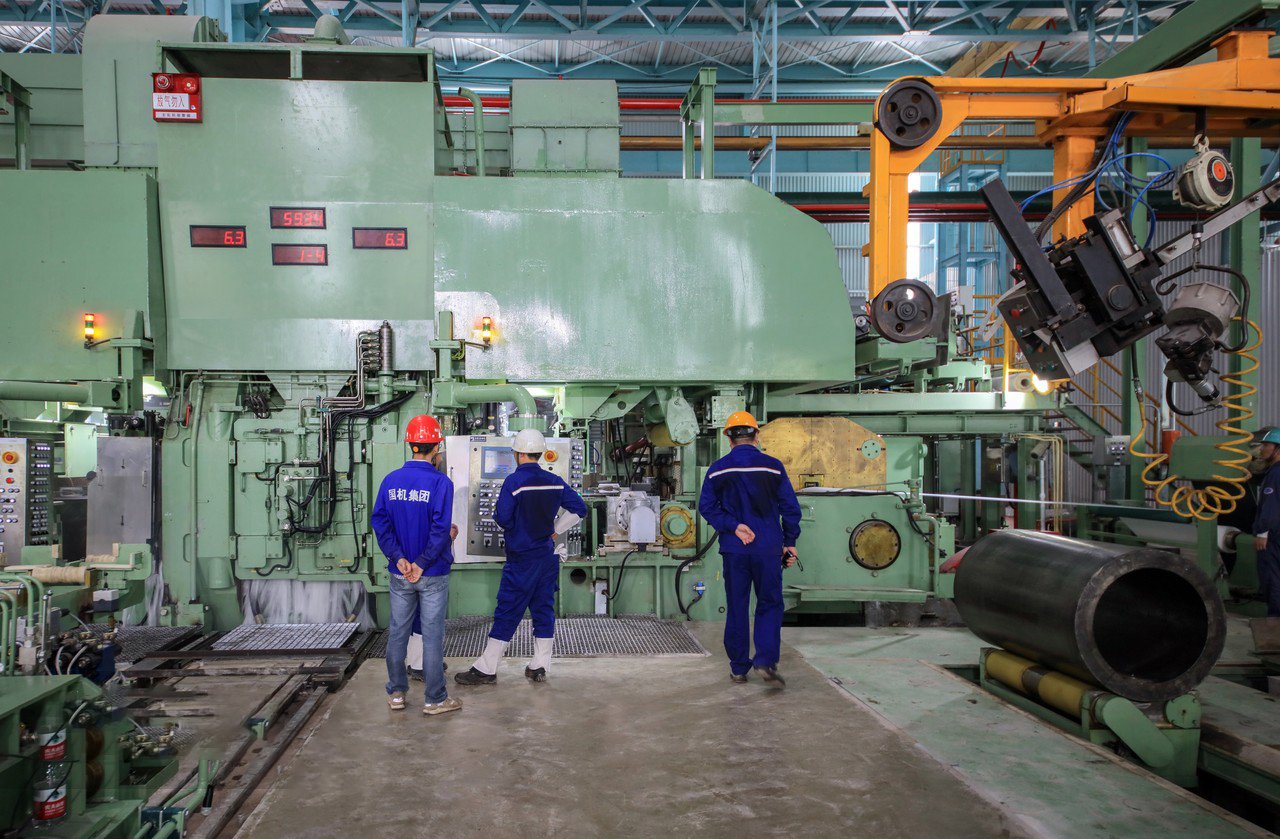
The challenges faced by SEA Precision were multifaceted, extending far beyond the simple metric of wasted steel. The problem was systemic, rooted in a sourcing strategy that prioritized upfront cost over total value and consistency. This approach created a ripple effect of inefficiency that permeated their entire operation, highlighting the critical importance of a stable and predictable raw material supply chain in modern manufacturing. Understanding the depth of their issues was the first step toward crafting a meaningful solution.
The Hidden Costs of Material Inconsistency
The most obvious cost of their scrap problem was, of course, the wasted material itself. With stainless steel prices being a significant input cost, an 18% scrap rate on their press lines represented a direct and substantial financial drain. However, the hidden costs were even more damaging. Each time a sheet tore or wrinkled in the press, it wasn't just the material that was lost; valuable machine time was wasted. The press had to be stopped, the defective part removed, and the dies inspected for any potential damage or steel residue, a process that could take anywhere from 15 to 30 minutes.
Furthermore, the inconsistent material led to accelerated wear on their expensive stamping dies. Materials with fluctuating hardness and tensile strength require different pressures to form correctly. When a harder-than-expected batch was processed, it placed undue stress on the tooling, leading to micro-fractures and a shorter operational lifespan. We estimated that they were replacing their deep-drawing dies 30% more frequently than industry benchmarks, a significant and often overlooked capital expenditure directly attributable to their inconsistent raw material supply.
ly, there was the energy cost. Each press cycle consumes a significant amount of electricity. A production run that should have yielded 100 finished parts but instead produced only 82 due to defects still consumed the energy required for all 100 cycles. When extrapolated over a year, this "ghost" energy consumption, tied directly to producing scrap, represented a noteworthy operational expense and an unnecessary environmental footprint.
Production Bottlenecks and Their Ripple Effects
The high scrap rate at the stamping stage created a severe bottleneck that disrupted the entire production flow. A manufacturing line is like a river; a blockage at any point causes the flow to back up. At SEA Precision, the welding and finishing stations were frequently idle, waiting for a consistent supply of properly formed parts from the presses. This stop-and-go workflow made production planning a nightmare and drastically reduced their overall equipment effectiveness (OEE).
This inconsistency had a direct impact on labor efficiency. Skilled welders and polishers, instead of performing their value-added tasks, were often left waiting. This not only increased the labor cost per unit but also led to decreased morale among the workforce. During my visit, a shift supervisor explained his frustration: "We have the skills and the machines to produce twice as much, but we are constantly held back by the quality of the steel. We spend more time troubleshooting than producing."
The ripple effect extended all the way to their assembly and shipping departments. Unpredictable output from the fabrication floor meant that fulfilling large customer orders on time was a constant challenge. This led to expedited shipping costs to meet deadlines and, in some cases, damaged customer relationships due to delays. The initial "savings" from sourcing lower-cost, variable-quality steel were being completely erased by these downstream inefficiencies.
The Challenge of Sourcing from Multiple, Unvetted Suppliers
At the root of SEA Precision's problem was its sourcing strategy. By relying on a rotating cast of traders, they were engaging in a transactional, price-driven procurement model. This approach prevented them from building a deep, technical relationship with any single producer. They had no visibility into the origin of the steel, the production standards of the mill, or the quality control measures in place. Each new batch was a gamble.
This lack of traceability made root cause analysis nearly impossible. When a batch failed, there was no way to provide feedback to the source mill to prevent a recurrence. The trader could simply supply material from a different, equally unpredictable mill for the next order. This contrasts sharply with the partnership model we champion at MFY, where we control the entire process from raw material to finished sheet, ensuring complete traceability and consistent quality.
A fragmented supply chain inherently introduces variability. The table below illustrates the stark difference between a strategic partnership with an integrated producer like MFY and sourcing from multiple traders. For SEA Precision, moving to a single, reliable source was the only way to break the cycle of inconsistency and regain control over their production process.
| Feature | Sourcing from Multiple Traders | Partnering with MFY (Integrated Producer) |
|---|---|---|
| Material Consistency | Low; varies from batch to batch | High; guaranteed specifications and traceability |
| Technical Support | Minimal to none | In-depth; collaborative problem-solving |
| Traceability | Poor; origin often unknown | Complete; from melt to final sheet |
| Cost Focus | Upfront price per ton | Total Cost of Ownership (TCO) |
| Relationship | Transactional | Strategic Partnership |
Material consistency reduces scrapTrue
Uniform mechanical properties and precise thickness tolerances in stainless steel sheets prevent production variances that cause defects and wasted material.
Scrap only affects material costsFalse
High scrap rates create hidden costs including wasted machine time, accelerated tool wear, energy inefficiency, and production bottlenecks that impact the entire operation.
How did MFY's stainless steel sheet contribute to solving the scrap problem?
Facing a crisis of inconsistency, how could SEA Precision find a material that performed reliably every single time? They were wary of another failed trial run, as their production targets couldn't afford more delays. The solution required more than just steel; it required a collaborative approach.
MFY addressed the scrap issue by supplying Grade 304 stainless steel sheets manufactured to a precise thickness tolerance of ±0.02mm and a consistent hardness range. Our integrated cold-rolling and processing controls ensured predictable material performance, directly eliminating the tearing and wrinkling issues during deep-drawing.
Our approach was not to simply sell them a product, but to co-engineer a solution. It began with a deep dive into their challenges. I sent our lead technical specialist to their plant for two days, not with a sales pitch, but with a toolkit for analysis. We collected samples of their scrap material and a "golden sample" from a batch that had performed well. We analyzed the material composition, grain structure, and mechanical properties of both. The results were clear: the failing material exhibited significant variations in tensile strength and thickness across the coil, while the good sample was highly uniform. Armed with this data, we didn't just offer them a standard 304 sheet. We proposed a custom-run product from our own cold-rolling facility, specifically engineered for their deep-drawing application. We guaranteed a specific range for yield strength and elongation—the two most critical parameters for their process—and a thickness tolerance that was twice as stringent as the industry standard. This was about providing certainty in a box.
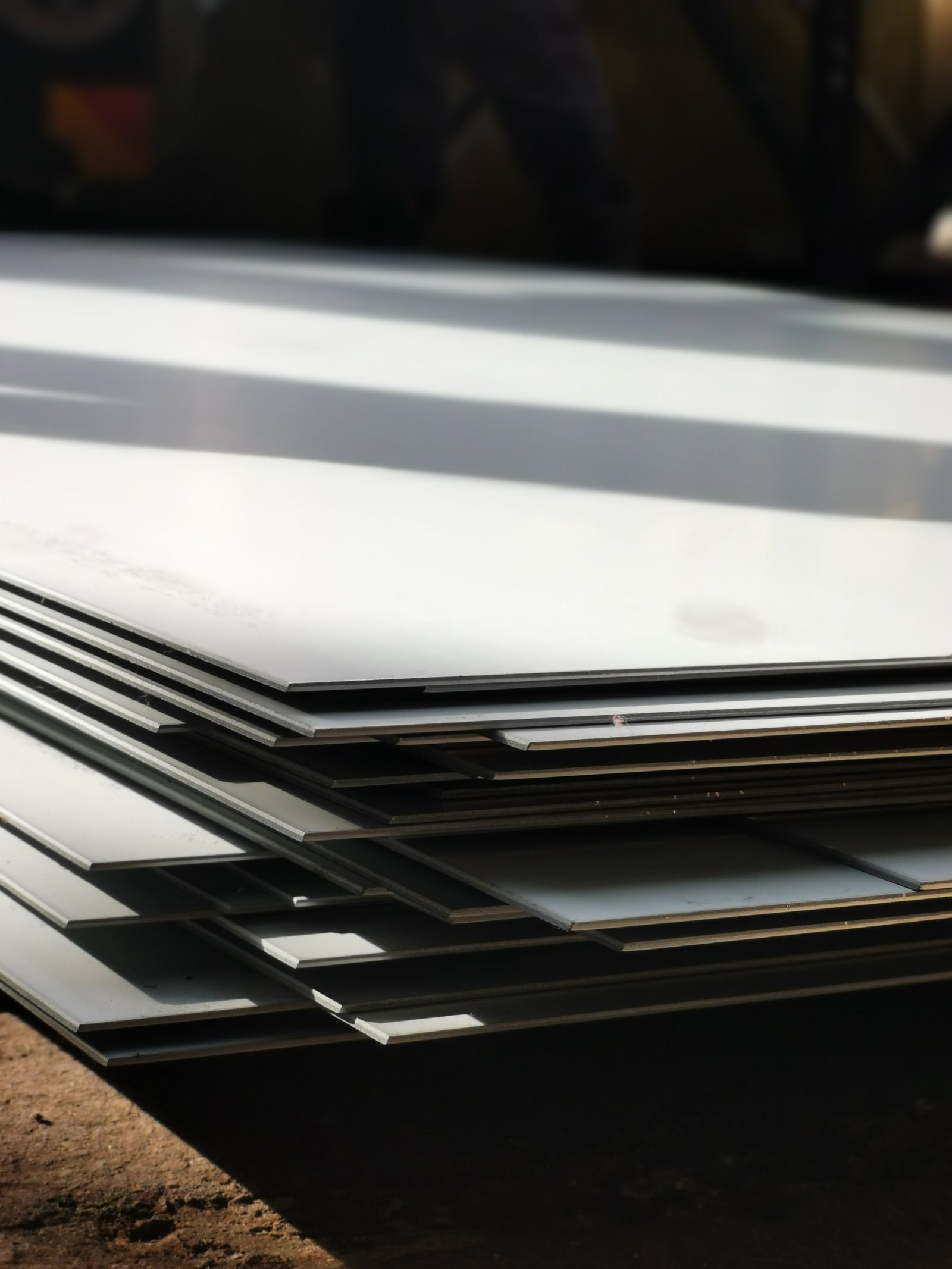
The transition from a reactive, inconsistent supply chain to a proactive, stable one was a meticulous process. It involved leveraging MFY's core strengths as a fully integrated producer to deliver a product that was not merely a commodity, but a key component of the client's manufacturing success. By focusing on precision, process control, and partnership, we systematically dismantled the root causes of their scrap problem.
The Role of Precision Cold-Rolling
The heart of our solution lay in our advanced cold-rolling capabilities. Unlike traders who source from various mills with different standards, MFY controls the entire reduction and finishing process. For SEA Precision, we identified that a consistent Rockwell hardness value and uniform elongation properties were essential for their deep-drawing application. Their previous supplies had hardness variations of up to 15 points across a single sheet, causing the material to flow unevenly into the die. This is what led to the catastrophic tearing.
Our technical team set a target hardness of HRB 80-85 and an elongation value of over 45%. Through precise control of the rolling pressure and annealing temperatures in our production line, we were able to produce 304 stainless steel coils that met these exacting specifications. We provided them with a material test certificate (MTC) for every single coil shipped, which included detailed data on chemical composition, tensile strength, yield strength, elongation, and hardness. This level of transparency was something they had never experienced before.
Furthermore, we addressed the critical issue of thickness variation. Their presses were calibrated for a nominal thickness of 1.2mm. However, their previous material often varied from 1.15mm to 1.25mm. This seemingly small deviation was enough to alter the pressure distribution in the die, leading to wrinkling (if too thin) or tearing (if too thick). Our precision rolling mills maintained a thickness tolerance of ±0.02mm, effectively eliminating this variable from their production equation. The operators could set their machines with confidence, knowing the material would respond the same way, every time.
From Raw Coil to Custom-Cut Sheet: MFY’s Integrated Process
Our ability to deliver this solution is a direct result of our fully integrated supply chain. We are not just a trader or a processor; we are both. The process began with the careful selection of hot-rolled raw coils from our most trusted mill partners. We specifically chose raw materials with a chemical composition optimized for formability. This raw coil was then brought into our own cold-rolling facility, where the critical reduction and annealing processes took place under the watchful eye of our quality control team.
After rolling, the coils were transferred to our processing center for slitting and cutting-to-length. For SEA Precision, we cut the sheets to their exact required dimensions, reducing their upfront processing waste. But we also paid close attention to the quality of the cut. We used high-precision slitters and shearers to ensure burr-free edges. Burrs on the edge of a sheet can act as stress concentration points, initiating tears during the forming process. By providing clean-cut, perfectly dimensioned sheets, we removed another potential cause of defects.
This end-to-end control is MFY's key differentiator. From the initial melt to the final custom-cut sheet delivered to their door, we manage every step. This vertical integration guarantees not only the physical and chemical properties of the steel but also the logistical reliability. We provided SEA Precision with a predictable delivery schedule, allowing them to implement just-in-time inventory practices and free up valuable warehouse space.
A Partnership Approach: Technical Consultation and Support
Perhaps the most crucial element was the shift in relationship. We positioned ourselves as their technical partners, not just suppliers. The initial on-site analysis was just the beginning. During the trial phase, we didn't just ship the material and hope for the best. Our lead technician was on a video call with their production manager and machine operators during the first run of our material.
Together, they monitored the press performance, analyzed the first few parts, and made minor adjustments to the lubrication and press pressure to optimize the process for our material's specific properties. This collaborative fine-tuning was invaluable. It built confidence and demonstrated our commitment to their success. The operators, who had been frustrated for so long, became our biggest advocates because they saw firsthand how a better material made their jobs easier and more productive.
This partnership continues today. We conduct quarterly reviews with SEA Precision to discuss their production data, anticipate future needs, and identify opportunities for further improvement. For example, based on their feedback, we are now trialing a specific type of surface finish (a bright annealed finish instead of a standard 2B) to potentially reduce their final polishing time. This ongoing dialogue transforms the supplier-client dynamic into a symbiotic relationship focused on continuous improvement.
Precision thickness eliminates tearingTrue
Maintaining ±0.02mm thickness tolerance prevents pressure variations in dies that cause material failure.
Hardness variations improve formabilityFalse
Consistent HRB 80-85 hardness is crucial - previous 15-point variations caused uneven material flow and tearing.
What were the evaluated results after implementing MFY's stainless steel sheet?
Was the risk of switching to a new, specialized supplier worth it? For a business, change is always accompanied by uncertainty about the return on investment. The key is to look beyond the invoice and measure the real impact on the production floor and the bottom line.
After implementing MFY's tailored stainless steel sheets, the fabricator achieved a 12% absolute reduction in their press line scrap rate, dropping from 18% to 6%. This led to a 15% increase in overall production throughput and a measurable improvement in final product consistency.
The results for SEA Precision were both immediate and profound, validating their decision to invest in a higher-quality material solution. The headline figure was, of course, the dramatic drop in scrap. Their press line scrap rate plummeted from a costly 18% to a manageable 6% within the first month of using our material. This 12-point reduction translated directly into significant material cost savings. But the benefits cascaded throughout their entire operation. The reduction in machine stoppages and the elimination of constant recalibration led to a 15% increase in the number of finished parts produced per shift. This wasn't just about saving money on waste; it was about increasing their capacity to generate revenue with the same equipment and workforce. Furthermore, the consistency of the end product improved dramatically, reducing the time spent on manual rework and polishing by an estimated 20%. This allowed them to improve their lead times and take on more demanding orders with confidence.
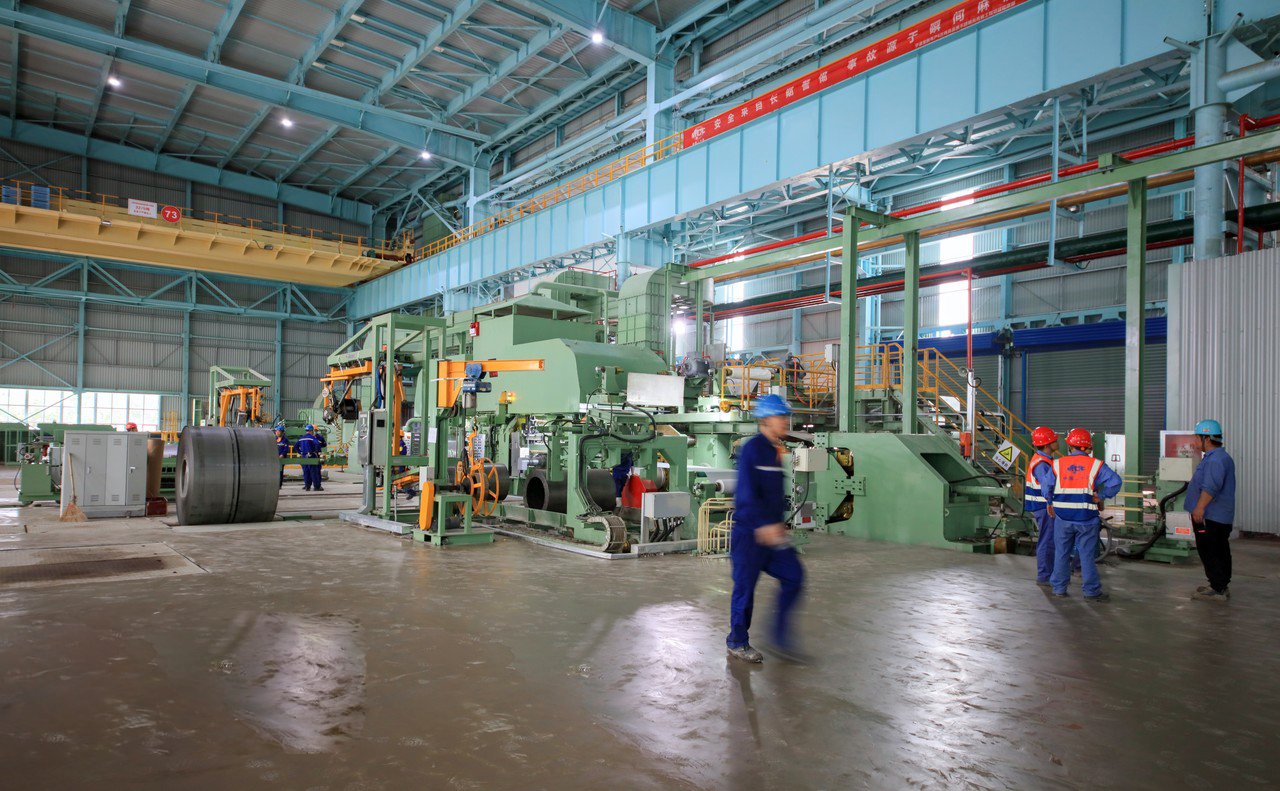
Evaluating the success of this partnership required a holistic view that encompassed financial metrics, operational KPIs, and qualitative benefits. The numbers told a compelling story of cost savings and efficiency gains, but the project's true value was also reflected in improved operational stability and enhanced market competitiveness for our client.
Quantifying the Financial Impact of Scrap Reduction
The primary financial win came from the direct reduction in material waste. Let's put this into concrete terms. SEA Precision processes approximately 500 tons of stainless steel sheets2 for their deep-drawing line per month. A scrap rate of 18% meant 90 tons of high-value stainless steel was being sold for pennies on the dollar as scrap every month. By reducing the scrap rate to 6%, the waste was cut to just 30 tons. This represents a saving of 60 tons of stainless steel per month.
Assuming an average price of $2,500 per ton for 304 stainless steel, this 60-ton reduction translates into a direct material cost saving of $150,000 per month, or $1.8 million annually. While our custom-processed sheets had a slightly higher per-ton cost than the commodity-grade material they were buying previously (around 5% higher), the ROI was massive and immediate. The incremental cost was dwarfed by the savings from scrap reduction alone, delivering a net saving of over $1.6 million per year.
This calculation doesn't even include the savings from reduced tooling wear and lower energy consumption per unit. The less frequent replacement of expensive dies and the improved energy efficiency per good part produced added an estimated $150,000 in additional annual savings, pushing the total financial benefit close to the $2 million mark.
Measuring Improvements in Overall Equipment Effectiveness (OEE)
While the financial savings were impressive, the improvement in operational efficiency was perhaps even more significant for the long-term health of the business. We worked with SEA Precision to track their OEE, the gold standard for measuring manufacturing productivity. OEE is a composite metric that multiplies Availability (uptime), Performance (speed), and Quality (good parts).
Before our intervention, their OEE on the press line was struggling at around 65%, well below the world-class benchmark of 85%. The main culprits were low Availability (due to frequent stops for scrap removal and die adjustments) and poor Quality (the 18% defect rate). After implementing our consistent material, their OEE score jumped to an average of 82% within three months.
The breakdown is as follows:
- Availability: Increased from ~80% to ~95% as unscheduled downtime for material-related issues was nearly eliminated.
- Performance: Increased from ~90% to ~95% as operators could run the presses at their optimal rated speed without fear of material failure.
- Quality: Increased from 82% (18% scrap) to 94% (6% scrap).
Multiplying these factors (0.95 0.95 0.94) gives an OEE of ~84.6%, a remarkable improvement that put them in the upper echelon of manufacturers. This OEE gain meant they could produce more with their existing assets, fundamentally increasing their plant's capacity without a single dollar of new capital investment in machinery.
A Qualitative Analysis: Operator Morale and Brand Reputation
The benefits that don't appear on a standard balance sheet were just as important. The plant environment transformed. The frustration that had characterized the press line was replaced by a sense of control and pride. Operators were no longer fighting the material; they were working with it. This led to a measurable decrease in employee turnover in that department and a notable increase in proactive suggestions for process improvements.
This newfound operational stability had a direct impact on their brand. With predictable lead times and consistently high-quality products, SEA Precision could strengthen its relationships with its existing customers—large home improvement retailers and construction contractors. They were able to confidently bid on larger, more complex projects that demanded stringent quality control.
Their reputation shifted from being a mid-tier producer to a high-quality, reliable manufacturer. This allowed them to command a better price for their premium products, further improving their profitability. In essence, solving the scrap problem was not just about cutting costs; it was about elevating their entire brand and competitive position in the demanding Southeast Asian market.
Annual savings exceeded $2MTrue
Combined material savings and operational efficiencies generated nearly $2 million in annual financial benefits.
Material costs increased 5%False
While MFY's sheets had 5% higher unit cost, the net savings from scrap reduction resulted in significant overall cost reductions.
What can other fabricators learn from this case study?
Do you believe a similar transformation is out of reach for your own operations? It's easy to dismiss a case study as a unique situation. However, the success of SEA Precision wasn't due to magic, but to a fundamental shift in mindset that any fabricator can adopt.
Fabricators can learn that the true cost of raw material extends far beyond the initial purchase price. Prioritizing material consistency and forming a technical partnership with an integrated supplier like MFY directly translates into lower scrap, higher efficiency, and a stronger bottom line.
The core lesson from this journey is the critical importance of moving beyond a purely transactional view of material procurement. For too long, many in our industry have treated stainless steel as a simple commodity, where the lowest price per ton is the only factor that matters. This case study serves as powerful evidence against that outdated philosophy. It champions the concept of Total Cost of Ownership (TCO)3, where the initial material cost is just one part of a much larger equation. The "cheaper" material was costing SEA Precision millions in hidden expenses. Other fabricators must recognize that their steel supplier should be a partner in their success, not just a vendor on an invoice. Investing in quality and consistency from a reliable, integrated source is not an expense; it's one of the highest-return investments a manufacturing company can make to secure its long-term profitability and competitiveness.
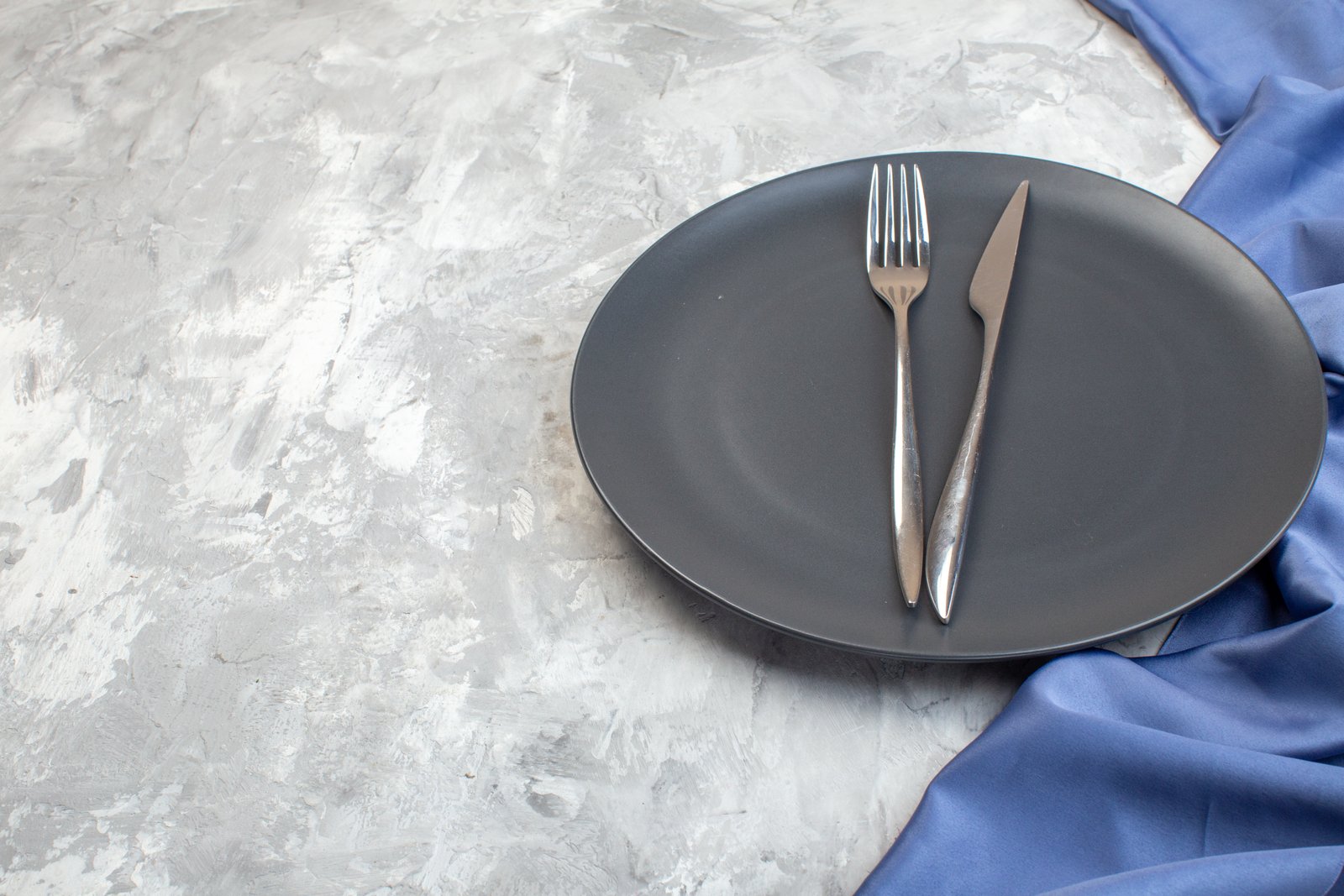
The journey of SEA Precision offers a clear blueprint for other fabricators seeking to optimize their operations. The principles they applied are universal and can be adapted by any company that works with steel. It boils down to a strategic re-evaluation of sourcing, a commitment to technical specificity, and a new vision for supplier relationships.
The Total Cost of Ownership (TCO) in Material Sourcing
The most critical takeaway is the adoption of a TCO framework for all procurement decisions. Fabricators must train their purchasing teams to look past the per-ton price and analyze the full financial impact of their material choices. The TCO of a stainless steel sheet includes not only its purchase price but also the costs associated with scrap, rework, machine downtime, accelerated tooling wear, excess energy consumption, and labor inefficiencies.
To implement this, a fabricator should start by meticulously tracking these hidden costs. For instance, assign a cost to every minute of machine downtime. Calculate the labor cost wasted on producing and handling a defective part. Quantify the shortened lifespan of tooling when using inconsistent material. When these figures are added to the initial purchase price, the "cheaper" material from a trader often reveals itself to be far more expensive in the long run.
In the case of SEA Precision, their 5% premium for MFY's material was repaid more than tenfold by the reduction in these associated costs. This is the power of TCO analysis. It shifts the conversation from "How can we cut material costs?" to "How can we reduce the total cost of production?" This change in perspective is fundamental to building a lean and resilient manufacturing operation.
The Importance of a Technical Specification Review
The second key lesson is to stop ordering material based on generic grade names alone. Simply asking for "304 stainless steel sheet" is an invitation for inconsistency. Fabricators must work to define a detailed technical specification sheet for their critical applications. This specification should be the foundation of every purchase order and supplier discussion.
This review process should be a collaboration between the engineering, production, and purchasing departments. What are the non-negotiable properties for your most demanding process? Is it a specific hardness range for forming? A minimum elongation percentage for deep drawing? A particular surface finish (e.g., 2B, BA, No. 4) to reduce polishing time? A tighter-than-standard thickness tolerance to ensure a perfect fit-up in welding jigs?
Once these critical-to-quality (CTQ) characteristics are defined, they should be communicated clearly to potential suppliers. A capable, integrated producer like MFY will welcome this technical dialogue. We can review your specifications and either confirm our ability to meet them or work with you to find the optimal parameters for both performance and cost. A supplier who cannot or will not engage in this level of technical detail is likely not the right partner for a quality-conscious fabricator.
Building a Collaborative Supplier Relationship
Finally, this case study underscores the immense value of building a true partnership with your supplier. A supplier should function as an extension of your own technical team. This requires moving away from adversarial, price-focused negotiations and toward a collaborative relationship built on transparency, trust, and shared goals4.
What does this look like in practice? It means sharing data. A fabricator should be willing to share their scrap rates and production challenges with their supplier, and the supplier should be willing to share detailed material test certificates and process control data. It means engaging in joint problem-solving. When an issue arises, the reaction should be a joint "How do we fix this together?" rather than a blame game.
Look for suppliers who are proactive. Do they visit your facility to understand your processes? Do they offer technical advice and suggest new materials or specifications that could improve your product? Do they have a stable, traceable supply chain they can explain to you? At MFY, this partnership model is central to our vision. We believe our success is inextricably linked to the success of our clients. For fabricators, choosing a supplier who shares this philosophy is the most important step toward achieving the kind of transformative results seen in this case.
TCO includes hidden costsTrue
Total Cost of Ownership accounts for scrap, downtime, and tool wear beyond just material price.
Generic material specs are sufficientFalse
Precise technical specifications are crucial to avoid production inconsistencies and quality issues.
What recommendations can be made for further improvement?
Knowing that significant improvements are possible is the first step, but how do you begin the journey? The prospect of overhauling your sourcing strategy and production processes can feel daunting, creating inertia. The key is to start with small, deliberate, and data-driven actions.
We recommend fabricators begin by conducting a detailed internal scrap audit to quantify the problem and identify root causes. Following this, they should initiate technical dialogues with integrated suppliers and propose a controlled pilot program to validate the performance of higher-quality materials such as stainless steel.
The path to improvement is an incremental journey, not an overnight switch. For any fabricator inspired by SEA Precision's success, the goal should be to replicate the process of improvement, not just the outcome. It starts with building a clear, data-backed business case for change within your own organization. Don't simply declare that you need better steel; prove it with numbers. A thorough internal audit provides the evidence needed to get buy-in from management and finance. Once the problem is quantified, you can approach potential partners like MFY5 with a clear set of challenges and objectives. This structured approach de-risks the transition and sets the stage for a successful pilot program, where the benefits can be tested and measured on a small scale before a full operational rollout. This methodical process ensures that every step forward is confident and justified.
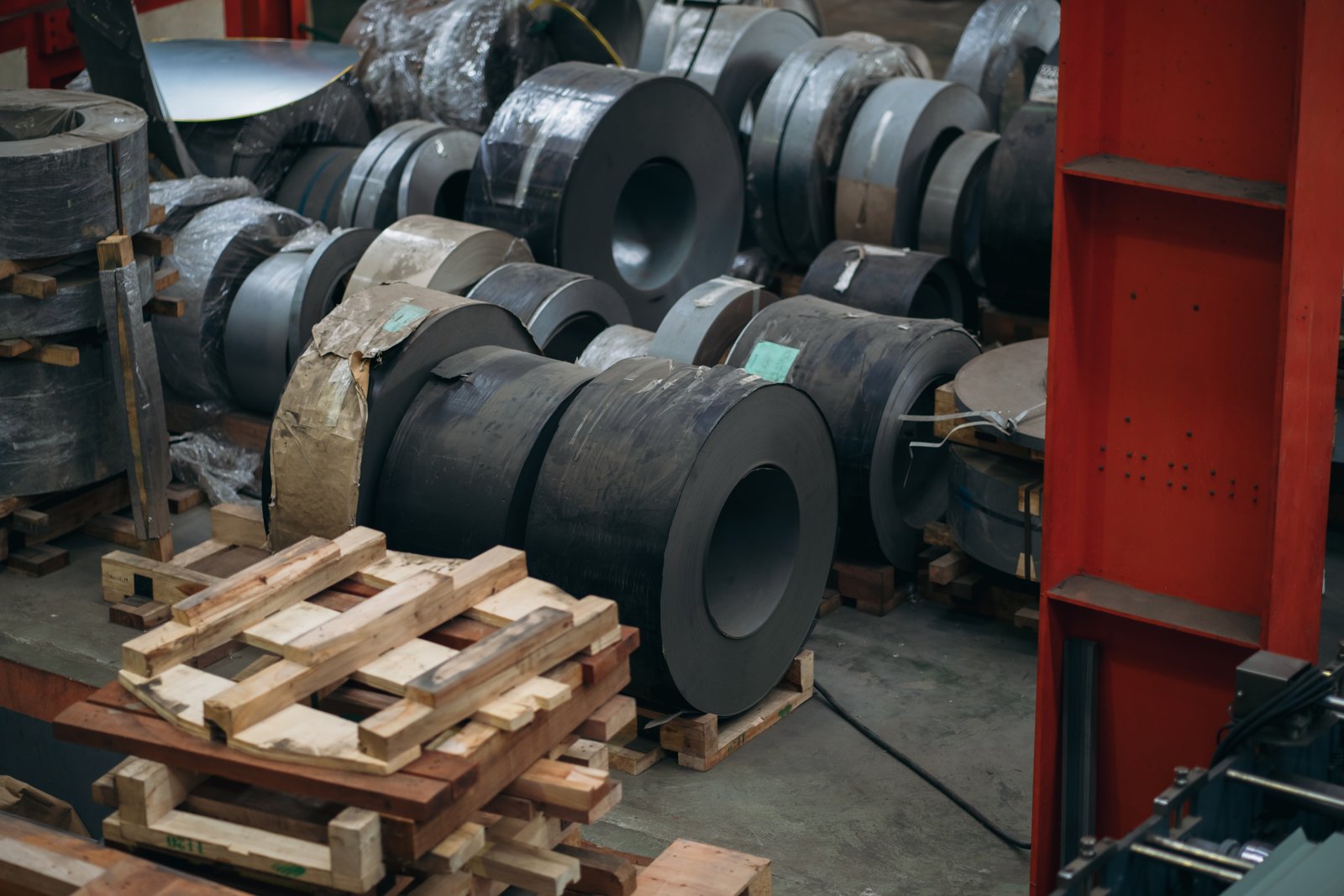
To build on the lessons learned and embark on a path of continuous improvement, fabricators can adopt a structured, three-step approach. This methodology moves from internal analysis to external collaboration and finally to empirical validation, creating a low-risk, high-reward framework for transforming material sourcing and production efficiency.
Step 1: Conduct a Comprehensive Scrap Audit
Before you can solve a problem, you must understand it in detail. The first and most critical action is to initiate a comprehensive scrap audit. This goes beyond simply weighing the scrap bin at the end of the day. It requires a granular, data-driven analysis to pinpoint exactly where, when, and why waste is being generated. Form a small, cross-functional team including members from production, quality, and engineering.
First, categorize your scrap. Is it due to material tearing during stamping (formability issue), wrinkles (thickness/hardness issue), surface blemishes (finish issue), or off-cuts (nesting/sizing issue)? Create specific codes for each defect type. Second, track the occurrence of this scrap. Log it by machine, by operator, by shift, and, most importantly, by material batch or coil number. This will allow you to correlate defect rates with specific suppliers or material deliveries. Use simple tools like check sheets or a shared spreadsheet to log this data consistently for at least one month.
The goal of this audit is to produce a detailed report that quantifies the problem in financial terms. For example: "In May, we generated 15 tons of stamping-related scrap, costing us $37,500 in material. 80% of this scrap came from Supplier X's material." This data-rich report is the single most powerful tool you will have for justifying a change in your sourcing strategy to senior management.
Step 2: Engage Suppliers in a Technical Dialogue
Armed with data from your audit, the next step is to change the way you communicate with your suppliers. Move away from price-only conversations and initiate a deeper technical dialogue. For your existing suppliers, present them with your findings. Share the data on how their material is performing in your processes. This can be a revelatory conversation and a test of their commitment to quality.
For potential new suppliers like MFY, use this data to open the conversation. Instead of asking "What is your price for 304 sheet?", ask "We are experiencing a 15% scrap rate due to tearing in our deep-drawing process with material of X hardness. Here is our data. How can your product solve this specific problem?" This immediately elevates the conversation from a commodity transaction to a technical consultation. Prepare a checklist of questions for potential partners:
- Can you provide material test certificates (MTCs) with every coil?
- What are your standard tolerances for thickness, hardness, and flatness? Can you accommodate custom tolerances?
- Can you describe your quality control process from raw material to finished product?
- Do you have technical staff who can visit our plant or consult with our engineers?
- Can you provide traceability for your materials back to the original melt?
The quality of their answers will tell you everything you need to know about their capabilities and their philosophy as a supplier.
Step 3: Implement a Pilot Program and Measure Everything
Once you have identified a promising potential partner who engages in a technical dialogue, the final step is to validate their claims with a structured pilot program. Do not switch your entire production over at once. Propose a limited, controlled trial to directly compare the new material against your existing supply. A typical pilot might involve purchasing just one or two coils of the new, higher-specification material.
Define the success metrics for the pilot in advance. These should be the same KPIs you identified in your scrap audit: scrap rate, OEE (Availability, Performance, Quality), number of machine adjustments per shift, and a qualitative assessment of the finished part. Designate a specific machine and operator for the trial to ensure a consistent testing environment. Run the incumbent material for a set period and record the data. Then, switch to the pilot material from the new supplier and run it under the exact same conditions, recording the same data points.
The result will be a clear, direct, "apples-to-apples" comparison. A successful pilot will provide indisputable proof of the performance benefits and a precise calculation of the potential ROI. For example: "By using MFY's pilot coil, our scrap rate on Press #5 fell from 16% to 5%, and we eliminated 10 hours of downtime over the week-long trial." This hard evidence makes the final decision to switch suppliers a logical, data-driven conclusion rather than a speculative risk.
Scrap audits identify root causesTrue
A comprehensive scrap audit tracks defects by machine, operator, and material batch to pinpoint specific quality issues.
Supplier talks should focus only on priceFalse
Effective supplier engagement requires technical dialogues about material performance data, not just price negotiations.
Conclusion
This real-world case study proves that a strategic shift towards high-quality stainless steel from an integrated partner is not a cost, but a powerful investment. It's a direct path to slashing scrap, boosting manufacturing efficiency, and building a more resilient, competitive, and profitable business.
-
Discover the significant cost implications of high scrap rates in production ↩
-
Understand the economic impact of reducing scrap in high-volume processing ↩
-
Understand the comprehensive costs influencing material procurement decisions ↩
-
Discover strategies for building successful, goal-oriented supplier relationships ↩
-
Learn about MFY's capabilities and benefits as a potential supplier ↩
Have Questions or Need More Information?
Get in touch with us for personalized assistance and expert advice.
